Two airmen were presented with the Distinguished Flying Cross for their roles in a daring CV-22B Osprey rescue of 194 special operations forces during an Iranian ballistic missile attack on U.S. and coalition forces in Iraq earlier this year.
A third airman received a Bronze Star for his role leading the Osprey response during the Jan. 7 attack, and other missions.
Lt. Col. Adam Darrow, commander of 58th Operations Group Detachment 1, and Tech. Sgt. Samuel Levander, the operations section chief for the 71st Operations Squadron, both received the DFC for their role in the three-part evacuation of special operators Jan. 7. The citation does not identify the location from which the special operations forces were rescued due to operational sensitivities.
The Distinguished Flying Cross is awarded to service members for heroism or extraordinary achievement while participating in aerial flight.
Lt. Col. Adam Leachman, a CV-22 Osprey pilot from the 71st, received a Bronze Star for his role in a rescue at al-Asad Air Base in Iraq.
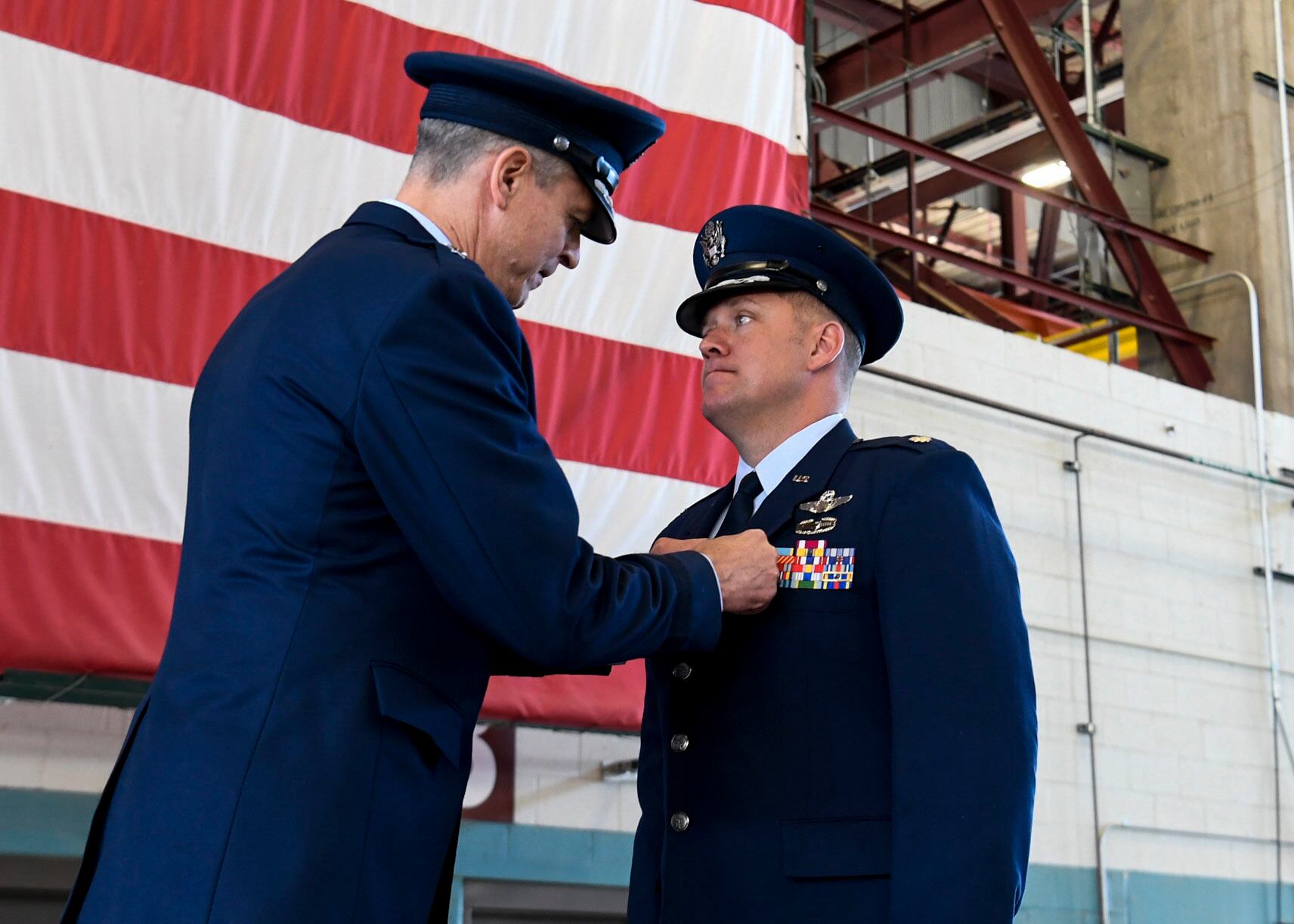
Maj. Gen. Craig Wills, commander of the 19th Air Force, presented the awards Tuesday during a ceremony at Kirtland Air Force Base in New Mexico.
“Today John Leachman, Adam Darrow and Samuel Levander join in the pantheon of Air Force heroes,” Wills said, according to a Thursday release from the Air Force. “Their names [are] forever associated with courage and bravery, mission accomplishment and excellence.”
At around 5:30 p.m. EST that day, Iran launched more than a dozen ballistic missiles at U.S. and coalition forces in Iraq, 10 of which struck al-Asad Air Base.
RELATED
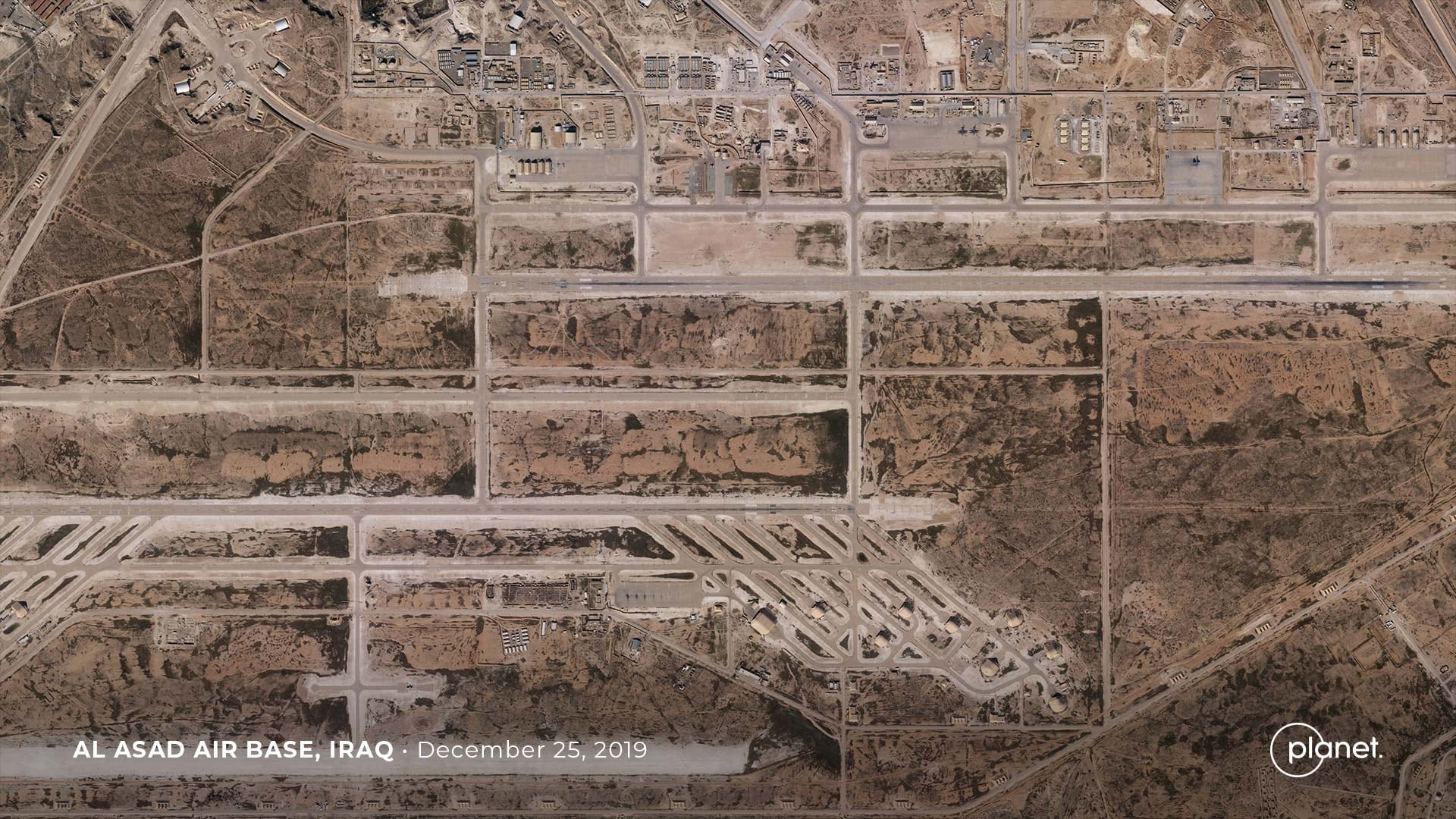
Darrow, who was then a major and serving as the mission’s Osprey aircraft commander with the 7th Expeditionary Special Operations Squadron, and Levander, a special missions aviator, were told a ballistic missile threat was imminent, and that their team was needed to evacuate personnel who were in danger. Darrow hastily launched his three-aircraft formation to rescue the special operation forces, according to citations for the awards provided by Kirtland.
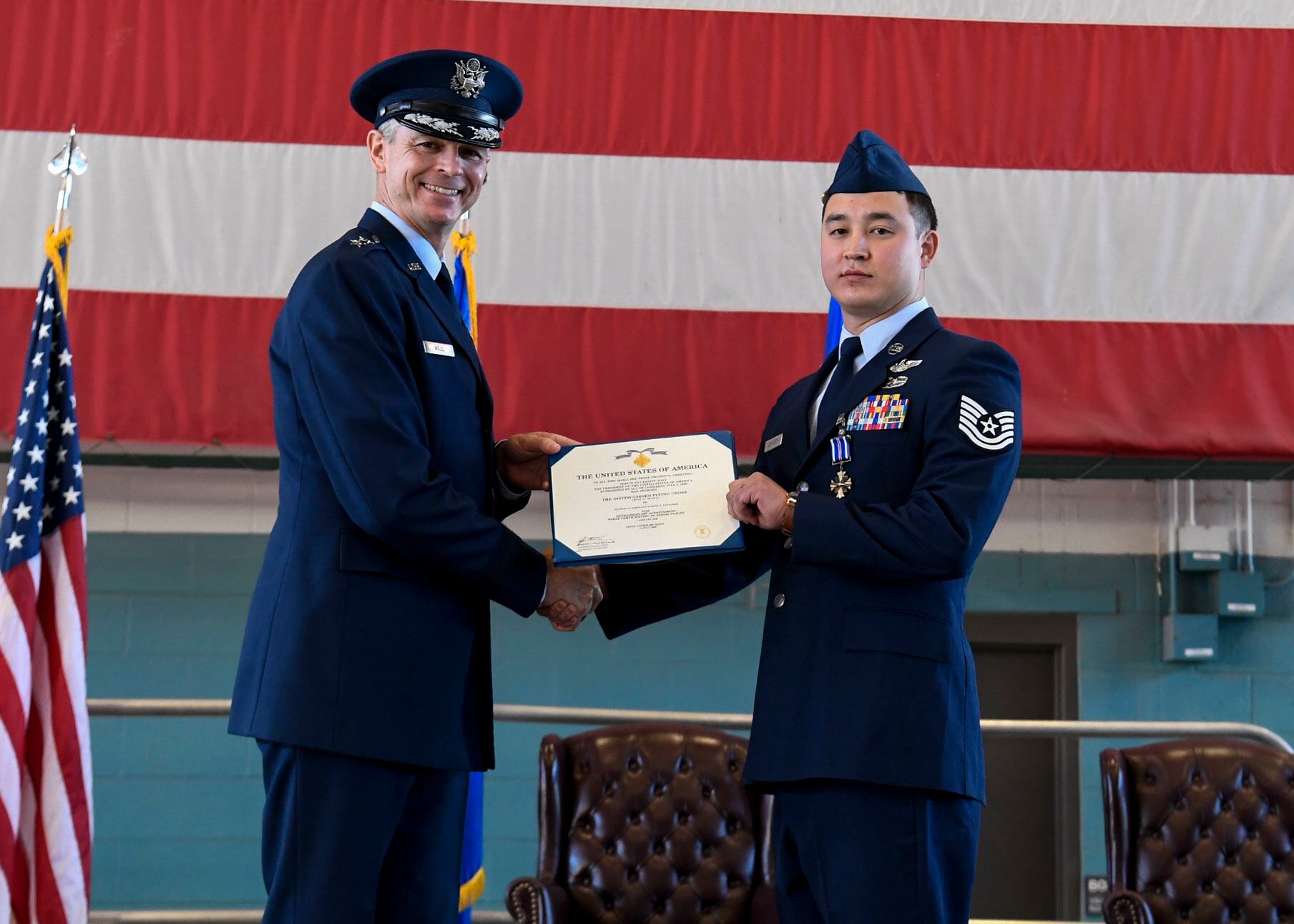
The team acted quickly. Within 90 minutes of the first alert, the Ospreys had already evacuated the first 132 personnel out of harm’s way.
It was far from an easy rescue. They had to get as many personnel onto the Ospreys as they could on the first trip. So Levander had to quickly figure out how many people they could safely pack on board. He calculated the takeoff and landing data for a full cabin load at each aircraft’s maximum gross weight limit, pushing the Ospreys as far as they could go.
The citation also said “host nation interference” kept the formation from landing on the runway they intended.
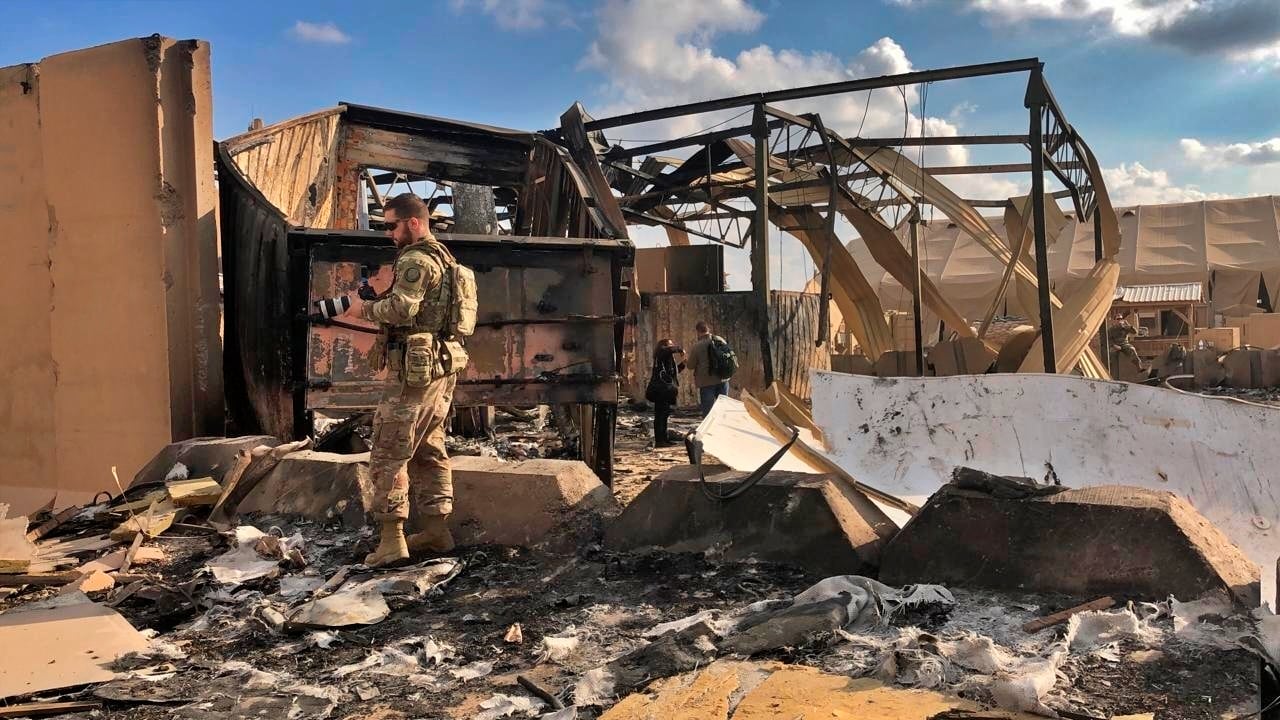
Darrow improvised. The Ospreys moved over to another taxiway running parallel to the intended runway. They carried out rolling landings in formation, at minimum separation, under their maximum gross weight.
After unloading the first load of personnel, the team returned to get 62 more special operators out of al-Asad. But things grew even more complicated and dangerous: Their refueling point was blocked, and they were running out of gas.
They were forced to divert to a third location. But while they were refueling there, they came under missile attack.
Levander voluntarily exposed himself as the missile attack was under way, leaving a hardened shelter to finish refueling an Osprey, the citation said.
Several flight controls on Darrow’s Osprey began malfunctioning, and one of his crewmembers became ill. Still, Darrow ensured his aircraft was safe to continue and Levander fixed a critical flight control fault, and flew with the formation to a desert landing site elsewhere, where they hooked up with other contingency forces.
The Ospreys carried out a low-visibility landing in complete darkness, in close proximity to 18 other aircraft. To make the landing possible, Levander made vital calls to the pilot to help guide him in.
At that point, the formation was 19 hours into their intended 12-hour duty day. But they weren’t done yet. They then went on to infiltrate special operations forces as part of a 13-aircraft assault force to reoccupy the under-attack al-Asad. Levander calculated the fuel requirements, and conducted the necessary maintenance on the Osprey to make sure it was ready for its next mission. They ended up finishing their mission 24 hours after the crew day began.
Darrow and Levander “performed above and beyond expected standards, operating [their] aircraft and [themselves] at the extreme limits, to twice the normal day, ensuring the survival of 194 lives, a contingency response force, and being instrumental in preventing an escalation of conflict,” the citation said. “The professional competence, aerial skill, and devotion to duty displayed by [Darrow and Levander] reflect great credit upon [themselves] and the United States Air Force.”
Leachman was also recognized for his role in evacuating al-Asad during the ballistic missile attack, and for another mission later in January.
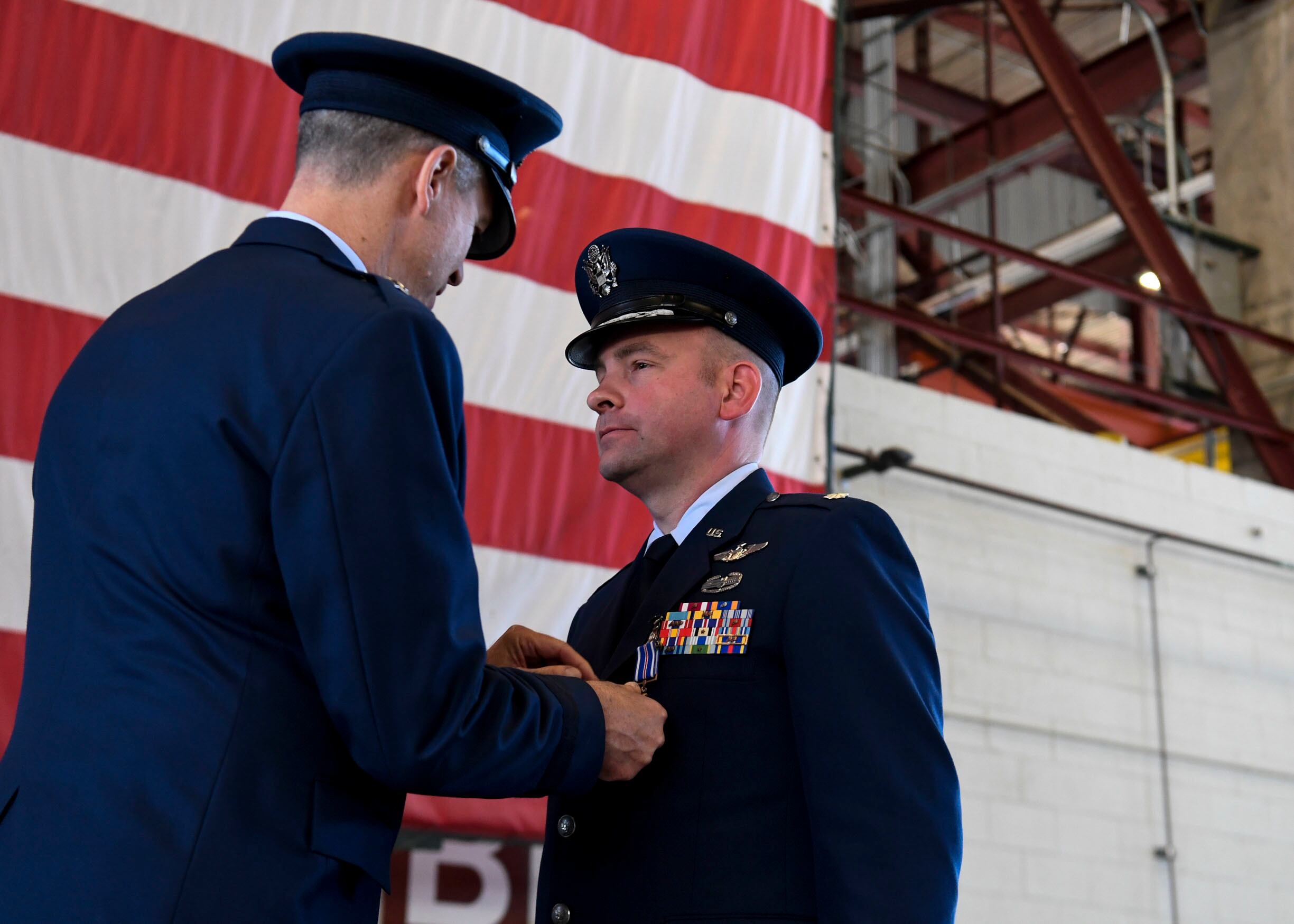
Leachman was serving as an operations officer for the 7th, leading an Osprey deployment that departed RAF Mildenhall in England to al-Asad in January 2020, within 24 hours of being notified.
Leachman integrated with a fleet of 15 other aircraft, including fixed-wing close air support, rotary-wing assault, rotary-wing close air support, special operations mobility, and manned and remotely piloted intelligence, surveillance and reconnaissance aircraft, the citation said.
“He deftly maintained readiness for the entire period, never once falling below the minimum force needed to accomplish his alert mission tasks,” the citation said.
On Jan. 7, Leachman was preparing for other rehearsal missions when he and his unit were called upon to immediately evacuate al-Asad, which was under threat of an impending ballistic missile attack.
Leachman’s unit also responded to transport the remains of a fallen troop from a base on the Syrian border on Jan. 25, the citation said, due to poor weather, distance and the danger that would come from trying to transport the troop’s remains another way.
Leachman’s leadership allowed many other missions to be accomplished, including Army Special Operations aviation support for ammunition and refueling equipment, moving Army Rangers, and airlifting key personnel from the Baghdad embassy.
Stephen Losey is the air warfare reporter for Defense News. He previously covered leadership and personnel issues at Air Force Times, and the Pentagon, special operations and air warfare at Military.com. He has traveled to the Middle East to cover U.S. Air Force operations.




